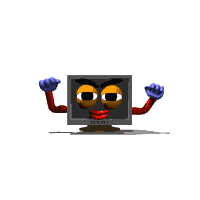
MSINFO32
Author: D. David Dugan

Want to know more about your computer? Many software download
websites offer all kinds of tools, many of them are freeware or
shareware that will help you learn more about how your computer
functions or that help you change your settings.
However, most of these tools are already built into windows and
you don't need to download extra software to do these things. In
this article I will be discussing one of those tools called
MSINFO32.
Go to "start" on your taskbar, then to "run". Type in or copy
MSINFO32 into the run box. Click okay. A tool will popup. I'll
go over it with you as you read this article.
Click the plus sign next to "Hardware Resources" Now select
Conflicts/Sharing. This shows you the IRQ addresses your
computer's hardware is using. If there are any conflicts, it
will tell you here.
Next is "DMA" which according to
http://www.x-emi.com/tech_terms.html , DMA is defined as
"Direct Memory Access. A technique for transferring data from
main memory to a device without passing it through the CPU.
Computers that have DMA channels can transfer data to and from
devices much more quickly than computers without a DMA channel.
This is useful for making quick backups and for real-time
applications. Some expansion boards, such as CD-ROM cards, are
capable of accessing the computer's DMA channel." That explains
it better than I could have done.
The next option is "forced hardware". This is hardware that is
not plug in play compatible and where the user manually
configures the settings rather than the system doing so
automatically. legacy Industry Standard Architecture (ISA)
devices are an example of forced hardware. You likely do not
have any forced hardware on your system unless you are an
advanced user.
Next is I/O which are Input/output settings." These settings
refer to sending data to and from devices. Again unless you are
a very advanced user, there isn't much for you to do here.
Now click IRQ. This stands for Interrupt Request and is an
electronic request from a hardware device to your CPU. There
should be only one device hooked up to each IRQ line; doubling
up devices on IRQ lines can lock up your system. Most of your
hardware comes with preset settings that do not conflict with
other devices.
If you do end up with an IRQ conflict, you can choose the
device in "device manager" and change the settings assigning a
new IRQ address that is not being used to the problem hardware.
Most of the time you should allow a technician to do that for
you.
The next choice is "memory". This is the memory blocks that
your hardware uses and again your hardware is usually set up so
that it automatically configures this for you.
Click the plus sign by "components" now. Each computer has
different hardware, but information about each piece of
computer hardware you have is located here. Also, there is a
"problem devices" choice as well. Hopefully when you click here
it says, "There are no devices with problems on this machine."
The history option is good for computer techs because it gives
them an idea of what has been installed and when along with
other important information that can help them fix your
computer.
If you click the plus sign next to software environment, you
will see several choices. You will find information about the
drivers that are installed, software updates, and more
depending on what software you have installed.
In this general area you can select Basic Information, Advanced
Information, or History for each of the items we have discussed
here. It's a good thing to know how to access your computer's
information if you are getting tech support by phone or in a
tech support forum.
Now at the top, go to tools. You will see a "repair Internet
Explorer" tab. Don't go there unless you are having problems
with Internet Explorer, but if you are, this will help you make
repairs to it. This is also where you can go to add components
to Internet Explorer.
Now the DirectX Diagnostic tool. This is a step by step easy to
understand wizard that will help you make sure DirectX is
working properly on your system or needs to be updated. Run
through all the tests for sound and video.
The windows report tool is where you can contact Microsoft
support about problems. I don't know if this actually works
anymore or if Microsoft is even listening. Try it out and see.
Most of the other tools I ignore except for the system file
checker. This is a handy tool you should run to check if any
system files have been changed or damaged since being
installed. It's good to run this about once per month. If it
finds damaged or changed system files it will prompt you to ask
you what you want to do. Just follow the instructions. You will
probably need your operating system CD if you want to replace a
system file that has been corrupted.
I hope this article has helped you learn a little more about
the computer you use and has helped you to learn that many
tools that you need are already built into your computer if you
know how to find them.

David Dugan personally helps to maintain
their computer support forum at http://forum.dugancom.com as
well as their Spyware Information site
http://spyware.dugancom.com.







